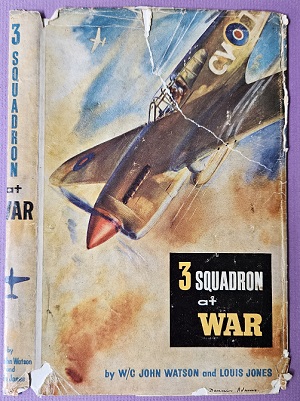Description
Title: They Shall Not Pass Unseen – 461 Squadron, RAAF
Author: Southall, Ivan
Condition: Very Good Plus
Edition: 1st Edition
Publication Date: 1956
ISBN: N/A
Cover: Hard Cover with Dust Jacket – 214 pages
Comments: The detailed history of No. 461 Squadron, RAAF.
This is the factual account of an extraordinary phase of the Second World War, the desperate fight waged between the Sunderland flying-boats and the Junkers-88s and Y-boats in the Battle of the Atlantic.
461 Squadron, Royal Australian Air Force was raised at Mount Batten, on the south coast of the England, on 25 April 1942. It was one of several Australian squadrons formed in accordance with Article XV of the Empire Air Training Scheme. Equipped with Shorts Sunderland flying boats, the squadron joined Coastal Command and, becoming operational on 1 July 1942, spent the rest of the war hunting German submarines.
The squadron relocated from Mount Batten to Hamworthy, still on the south coast but further to the east, on 31 August 1942. Its principal areas of operation were the north-western reaches of the Atlantic Ocean and the Bay of Biscay, which German submarines had to cross to move between their operational areas in the Atlantic and their bases on the French coast. In October, 461 squadron aircraft were also employed to conduct transport flights to Gibraltar in the lead-up to the Allied landings in North Africa.
1943 was the most intensive period of operations for 461 Squadron. It relocated to Pembroke Dock in Wales on 21 April, had its aircraft strength increased from nine to twelve, and concentrated on patrols over the Bay of Biscay. During 1943 the squadron sank three German submarines in the bay, including U-461, destroyed, in a remarkable coincidence by Sunderland “U” of 461 Squadron. The vital significance of the bay to the German submarine campaign meant it was also heavily patrolled by German aircraft and 461 Squadron lost five Sunderlands to them.
In March 1944, 461 Squadron was re-equipped with Mk III Sunderlands fitted with radar, allowing them to locate and attack German submarines at night. It practised night operating techniques intensively in the period leading up to the D-Day landings on 6 June. Thereafter it was heavily committed to operations to prevent a German submarine offensive against the shipping maintaining the vulnerable beachhead. In the weeks following the invasion, 461 Squadron Sunderlands patrolled the approaches to the Normandy beachhead and enemy ports on the French coast, as well as their old hunting grounds in the Bay of Biscay and out into the Atlantic.
With the liberation of southern France the submarine threat emanating from ports there declined, and in turn, so did the intensity of the 461 Squadron’s operations. At the end of September 1944, six of its aircraft were deployed to Sullom Voe in the Shetland Islands to conduct operations along the Norwegian Coast. Beginning on 30 September, these lasted until 29 October, when the detachment returned to Pembroke Dock.
461 Squadron saw out the war conducting increasingly fruitless patrols from Pembroke Dock – there were now fewer German submarines at large and those that were had been fitted with snorkel equipment which enabled them to stay submerged for long periods. These patrols continued after the cessation of hostilities in Europe on 8 May 1945 in order to monitor the surrender of the German submarines still at sea. The squadron formally disbanded on 4 June 1945 but several of its aircraft were employed on patrols until 18 June. The last 461 Squadron Sunderland was handed over to 10 Squadron, RAAF on 19 June. During its three years of operations, 461 Squadron sunk six German submarines and lost twenty aircraft to either enemy action or accidents.
Nominal Roll of all crews lost in action and of those involved in the more important operations.





